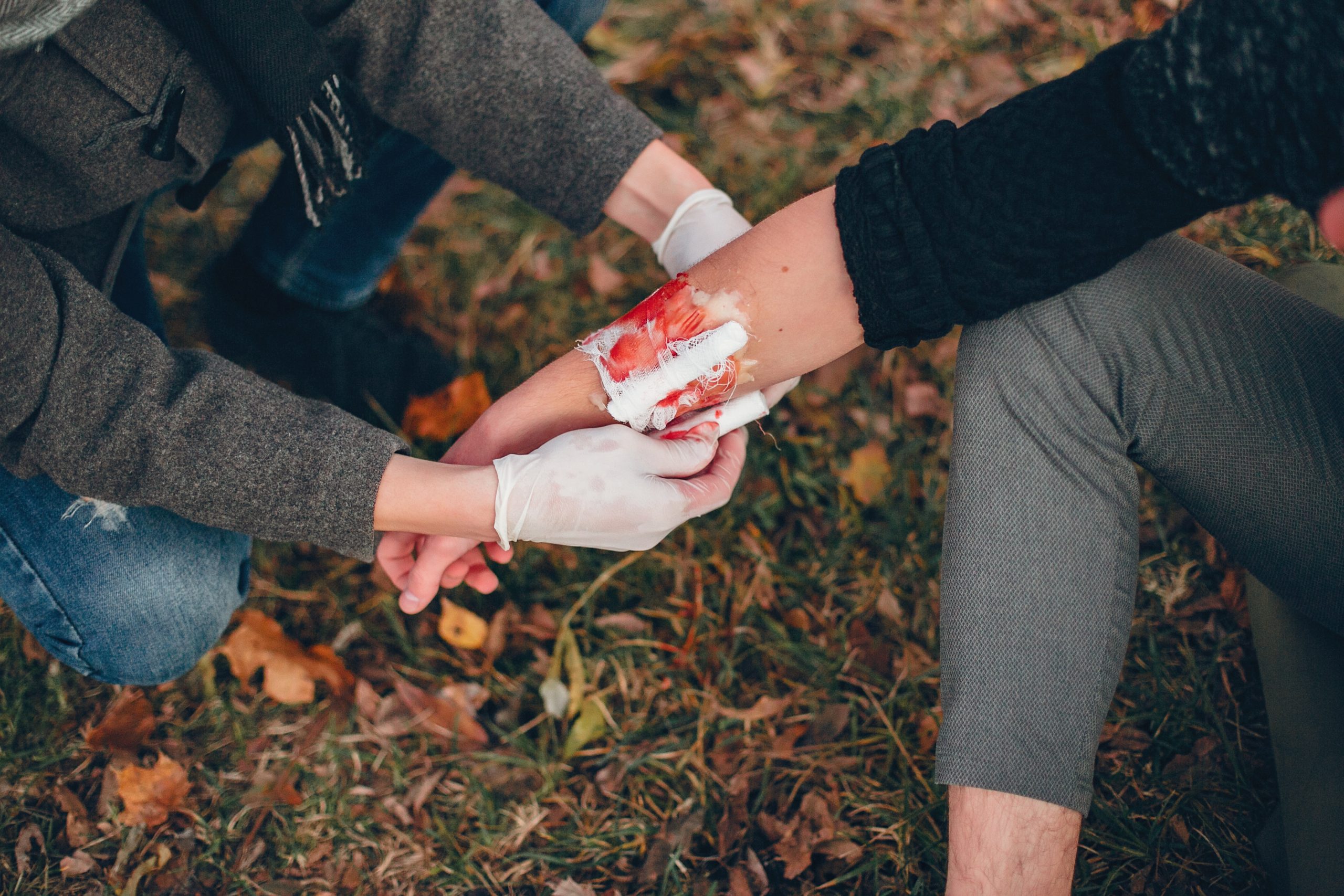First Aid Guide: What to Do When Someone Has a Cut or Injury with Heavy Bleeding
Accidents can happen anytime, and knowing how to respond quickly and effectively can make a significant difference. Heavy bleeding from a cut or injury can be alarming, but with the right steps, you can control the situation and provide proper care. Here’s a step-by-step guide to managing such injuries:
Step 1: Stay Calm and Assess the Situation
The first and most crucial step is to remain calm. Panicking can make the injured person more anxious. Quickly assess the injury to determine the severity of the bleeding and whether professional medical help is needed immediately.
- If the wound is deep or the blood is spurting (which indicates an artery injury), call for emergency medical assistance right away.
- If the bleeding is moderate and manageable, proceed with first aid steps.
Step 2: Apply Direct Pressure
- Use a clean cloth, sterile gauze, or your hand (if no other materials are available) to apply firm pressure directly to the wound.
- Press firmly to slow down the bleeding. Avoid removing the cloth even if it becomes soaked with blood; instead, layer another clean cloth on top and continue pressing.
Step 3: Elevate the Wounded Area
If possible, raise the injured area above the level of the heart. This helps reduce blood flow to the wound and can slow down bleeding.
- For arm or leg injuries, support the limb while maintaining pressure on the wound.
Step 4: Clean the Wound (If Bleeding Is Controlled)
Once the bleeding slows or stops:
- Rinse the wound gently with clean, lukewarm water to remove dirt or debris.
- Avoid scrubbing the wound as it can worsen the damage.
- If debris is embedded deeply, leave it in place and seek professional help.
Step 5: Bandage the Wound
- After cleaning, cover the wound with a sterile bandage or dressing.
- Wrap it firmly but not too tightly, as excessive pressure can restrict blood flow.
- Check regularly to ensure the bleeding has stopped and the area is not swelling.
Step 6: Watch for Signs of Shock
Excessive blood loss can lead to shock, which is a medical emergency. Symptoms include:
- Pale, cold, or clammy skin
- Rapid breathing
- Weak pulse
- Dizziness or confusion
If the injured person shows any of these signs, lay them down with their legs elevated and seek immediate medical attention.
Step 7: Seek Medical Attention If Necessary
While minor cuts and injuries can be treated at home, the following scenarios require a doctor’s care:
- The wound is deep, jagged, or longer than an inch.
- Blood does not stop flowing after 10-15 minutes of pressure.
- The injury was caused by a rusty or dirty object.
- The injured person has not had a tetanus shot in the past five years.
Tips for Effective First Aid
- Always wash your hands before and after handling a wound to reduce the risk of infection.
- Keep a well-stocked first aid kit at home, work, and in your car.
- Learn basic first aid skills or take a certified course to feel confident in emergencies.
Preventive Measures to Avoid Injuries
While accidents aren’t always preventable, taking the following steps can minimize risks:
- Use protective equipment like gloves or helmets when engaging in risky activities.
- Keep sharp objects, tools, and knives properly stored.
- Ensure living and working spaces are free from hazards like broken glass or exposed nails.
Remember: Your quick and composed response can help stabilize the injured person and reduce complications. Always prioritize safety and seek professional help when in doubt.
Stay informed and prepared—it’s the best way to protect yourself and others in emergencies.

